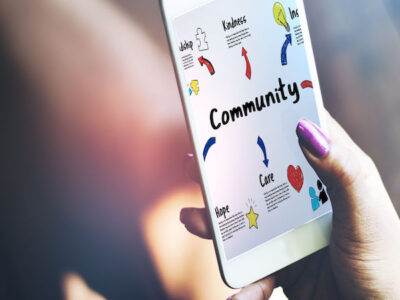
Twitter is a great platform to use as a way to engage in conversations with local communities, promote brand awareness and keep tabs on relevant issues and policies which bodes well for nonprofits. And as with nonprofits, it can also be a challenge due to resources and time. If you are struggling with nonprofit Twitter ideas, we have you covered with 10 ways to use Twitter for nonprofits.
1. Use Twitter lists to retweet and share content. Create Twitter lists to keep track of key accounts and make it a point to check in daily to see what those on your lists are talking about. Don’t be afraid to share content from other sources and organizations in your community. Twitter is meant to be social and when you share information from others (not just your content) you’ll be seen as a true collaborator in your community. Check out these tips on how to set up and utilize Twitter lists.
2. Celebrate non-traditional holidays. Chocolate Lover’s Day. National Volunteer Awareness Week. National Pi Day. Holidays like these make it fun to create quippy content and images that showcase your nonprofit’s personality. Use sites like Holiday Insights to see which fun holidays are coming up so you can plan ahead.
3. Share a sneak peek. Your audience wants to see the human side of your organization. And who doesn’t love a behind-the-scenes sneak peek? Use known hashtags such as #tbt (#throwbackthursday) or #meettheteammonday to showcase prior happenings or create one of your own that makes sense for showcasing the people in your organizations. Make it a regular occurrence (weekly is a good rule of thumb) to give your audience insight into the people of your brand.
4. Celebrate with images. Create infographics or standard images that showcase thermometers, charts and other visuals that share where you’re at with donations during various times of the year. You can also use imagery to showcase anniversaries, special events or donor recognitions. There are even free tools to help if you don’t have a design bone in your body such as Canva or Piktochart.
5. Promote blog posts. Twitter is a great distribution tool that can be used to share your latest blog posts. As a fast-moving channel, do not be afraid to share those new blog posts multiple times throughout the week/month as a way to ensure people see it. And don’t be afraid to share past blog posts, especially when relevant to a topic you are tweeting about.
6. Create hashtags for specific campaigns. As the largest grassroots program combating food insecurity in the state of Minnesota our client Minnesota FoodShare uses hashtags like #zerohunger #marchcampaign and #foodforall in the majority of its fundraising and support initiative tweets. Local food shelves and individuals in the community grab on to those same hashtags as a way to be a part of the conversation. Think of how you can start spreading the word using a similar concept for your nonprofit.
7. Host a Twitter chat to highlight those who benefit from your services, your executive director or a special donor. Twitter chats are an easy and fun way to get people engaged in conversation online. They can also help highlight the expertise of someone in your organization or others, and showcase those who support you or to whom you support. Cathy McPhillips from Content Marketing Institute has some great tips on setting up a Twitter chat.
8. Share testimonials. Your donors and recipients of your services have great things to say about you; share those online! Have your graphic designer (or use a free source such as Canva) turn those feel-good testimonials into images that can be shared on Twitter. Don’t forget to use their Twitter handle if they have one!
9. Promote CTAs for fundraising initiatives. If you’re raising money online, do not forget to talk about it on Twitter. Use images, direct CTAs (calls-to-action ) and ask your followers to retweet. Always include your online giving link and make it easy for followers to take action from your tweets.
10. Be a resource. Use Twitter as a platform to share information on policies, stats on the effects of your mission or info on what needs to be done to create change in your community. Your followers come to you not only to hear about what you are doing but as a resource for information and guidance around your cause or services.
What ways have you found to be successful as a nonprofit using Twitter? Share your success stories or questions in the comments, below.




